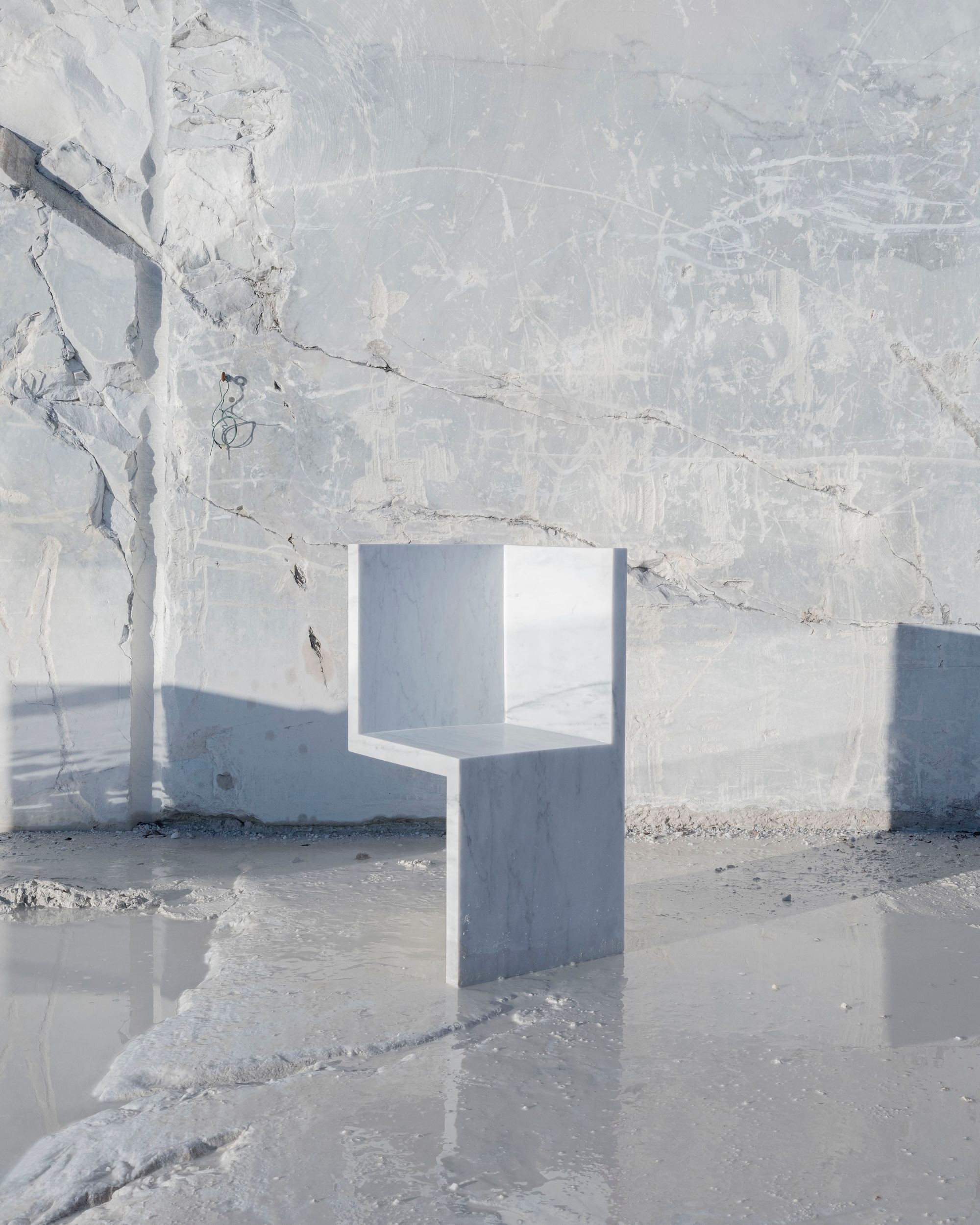CURRICULUM VITAE SEPTEMBER 19 2023
by Wava Carpenter
Discover the richly layered, cross-cultural world of Levantine designer Nada Debs
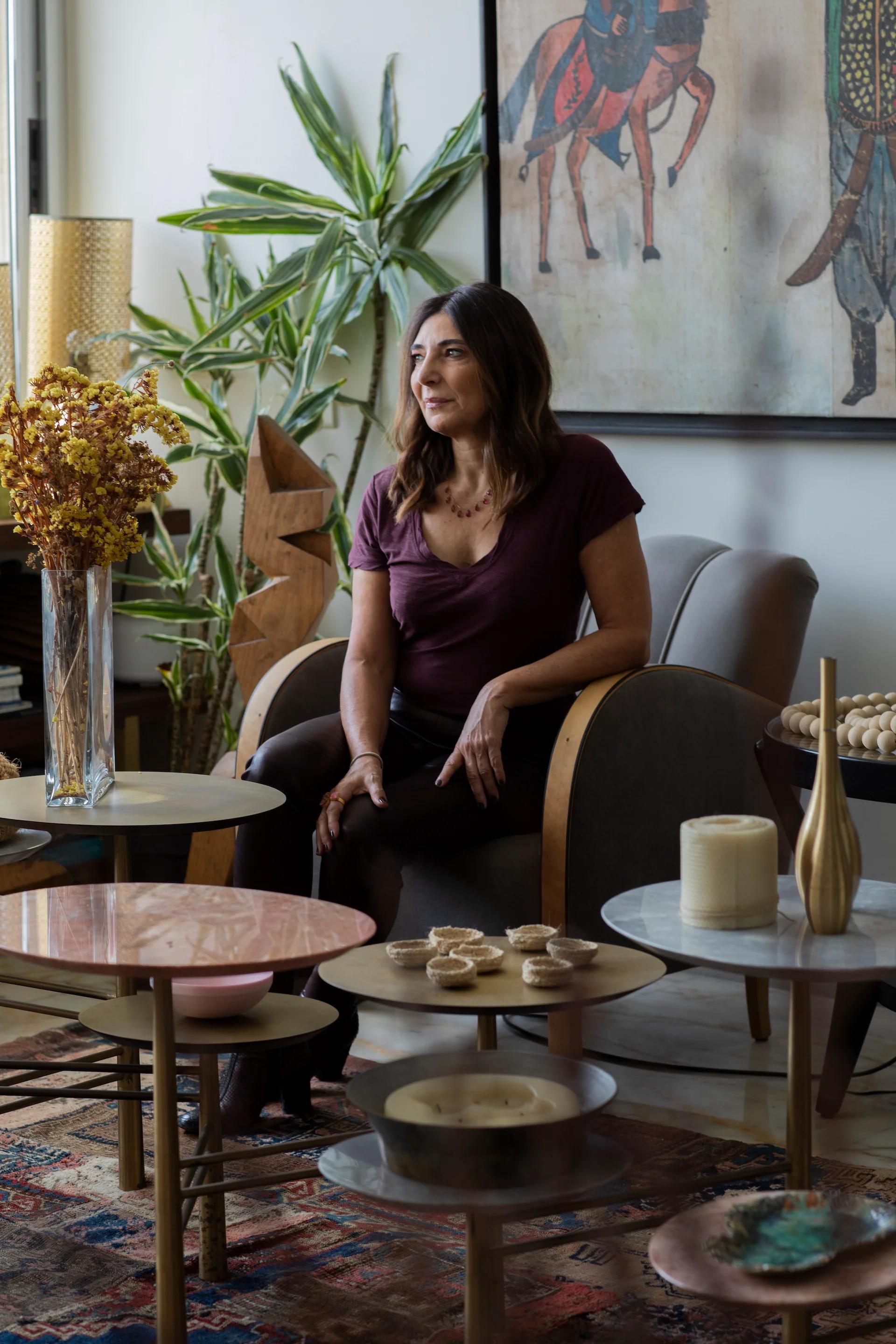
DESIGNER NADA DEBS IN HER BEIRUT STUDIO AND SHOWROOM
Nada Debs may be based in Beirut, but the horizons of her increasingly in-demand, award-winning design practice are decidedly global. More and more so, in fact.
Since the launch of her eponymous studio in 2003, she has drawn inspiration from the far-flung places she has called home—Japan, the US, and the UK—to rejuvenate the craft traditions of the Middle East’s Levant region, where her family is originally from. Though the forms of her au courant furniture, lighting, textiles, and objets d’art lean minimalist, each piece is intricately handmade by regional craftspeople using time-honored techniques, like marquetry, wood carving, and weaving. Her work frequently incorporates geometric motifs, because, as she explains, “geometry is a universal language appreciated and understood by people everywhere.”

INSIDE NADA DEBS' STUDIO AND SHOWROOM IN BEIRUT
“I very much love and respect Nada's sensitive, multicultural approach to design, which always strives to tell a human story,” enthuses gallerist Béatrice Saint-Laurent, whose Galerie BSL in Paris represents Nada’s work for collectible design audiences internationally.
Offering deeper insight into Debs’ practice, Saint-Laurent notes: “Nada’s ability to build bridges between cultures and nationalities is, in my opinion, unique in the world of design. She has a distinct talent for creating pure lines and assertive patterns, revisiting traditional craftsmanship in a non-conformist, rebellious way. For Nada, as for me, design isn't just about form and function. Objects have the capacity to weave links. I have chosen to present and develop her creations because they have a soul.”
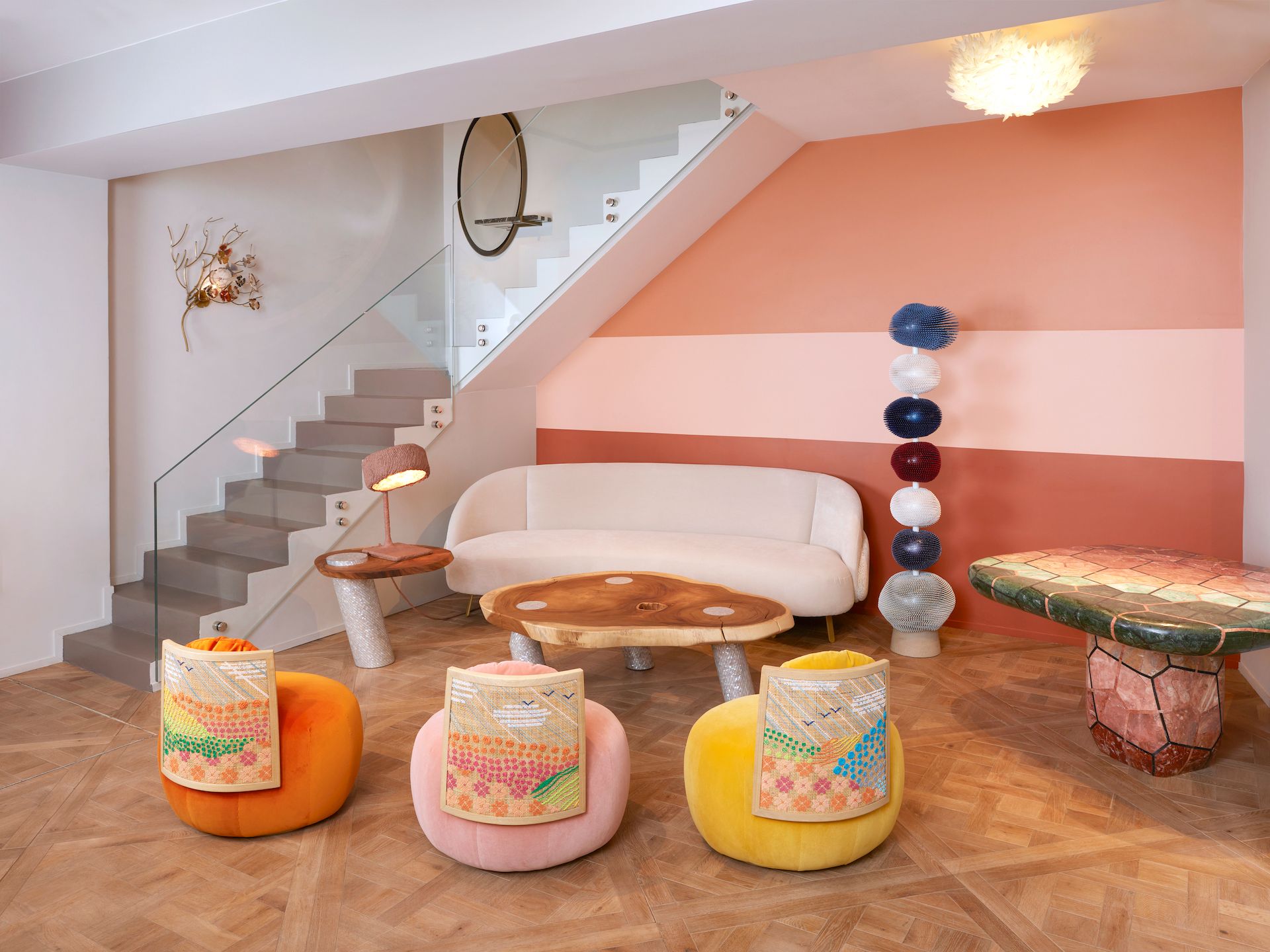
NADA DEBS: CONNECTIONS REBELLES ON VIEW AT GALERIE BSL IN PARIS, SUMMER 2023
Debs’ approach, which she calls “handmade and heartmade,” has resonated far and wide, attracting an impressive portfolio of international clients like Chanel, Bulgari, Bloomingdale’s, IKEA, Kohler, and IRTHI, as well as Saudi and Jordanian royalty. Earlier this month, she received the Institut du Monde Arabe’s inaugural Grand Prix d'Honneur, a new annual award celebrating remarkable design talents from the Arab world.
The resonance she's found no doubt is rooted in the humanity she aims to bring to her to everything she does. The harmoniously layered visual vocabulary that she achieves working in collaboration with traditional artisanal makers speaks to contemporary audiences around the globe—even those who don’t think of themselves as craft aficionados.
We sat down with Debs to find out more about the unique path that led her to the many successes she’s enjoying at present.

NADA DEBS/ DETAIL OF LAND OF THE RISING SUN CABINET
"I consider myself a kind of global creature."
Nada Debs
Wava Carpenter/ What early experiences sparked your interest in design and led you to your current career path?
Nada Debs/I’m Lebanese, but I was raised in Japan. My great uncle took the Silk Road and arrived in Japan in 1917. My father was part of my family's second generation there, and I was part of the third.
Just by living in Japan, you are exposed to the art of craft in a very natural way. When you go to shops that sell crafted objects, you always see craftspeople doing demonstrations, because the process of making is just as important as the end product. This perspective became innate to my system, and I have carried it with me everywhere I’ve lived since.
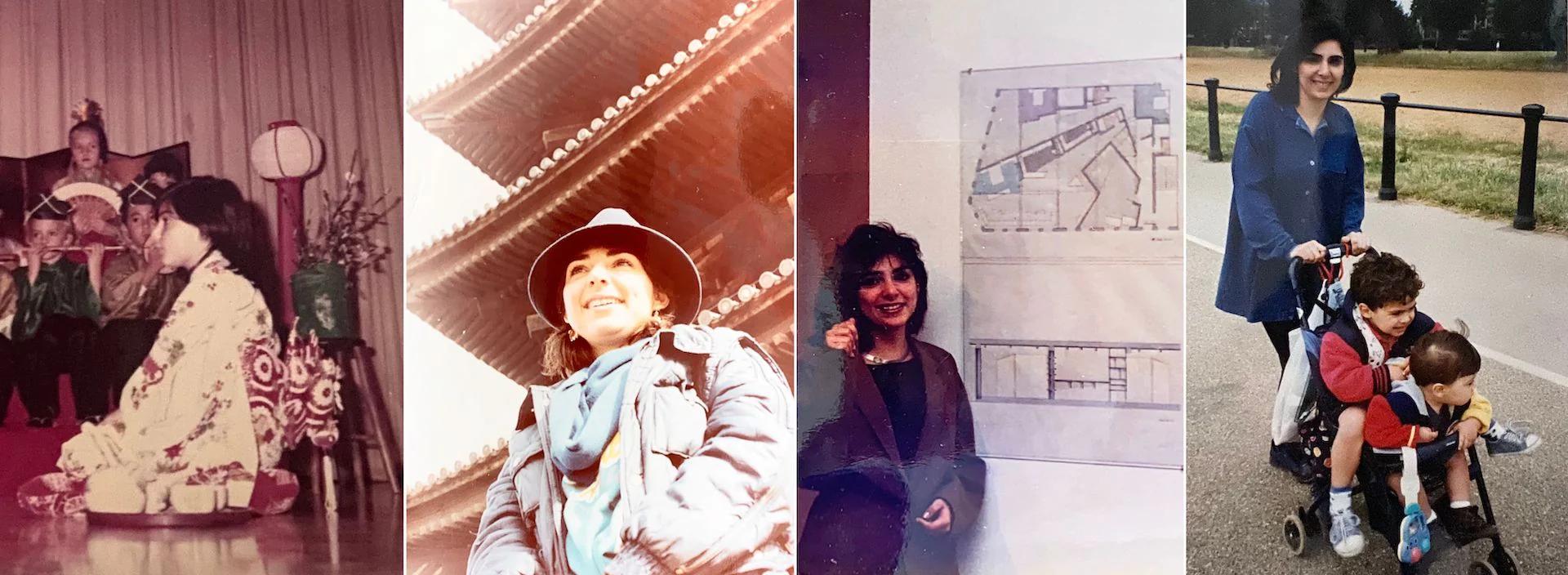
NADA DEBS (LEFT TO RIGHT): JAPAN 1972, JAPAN 1982, RHODE ISLAND SCHOOL OF DESIGN 1988, AND LONDON 1996
WC/ You’ve cited your time living, traveling, and working around the world as a source of inspiration? Can you tell us about a few formative experiences in different corners of the globe and how they continue to impact your work today?
ND/This is a really nice question for me, because I consider myself a kind of global creature. So I was originally in Japan, but then I moved to Providence to study interior architecture at the Rhode Island School of Design. Next, I went to London in search of a like-minded cultural community, which I hadn’t found in Japan or the US. Finally, my life brought me to Beirut, where I have truly connected with my roots. Every place offered me something distinct.
In Japan, design and aesthetics have a religious quality. Just look at the approach to meditation—to praying to a higher being—that you find there. It’s about silence. In this context, a gift to a God would be something pure, minimalist, and silent. I believe Japan is where I not only learned the value of craft but also subconsciously picked up on the beauty in the subtleness of things. What’s important is what you don’t see—the peacefulness around a piece, not just the piece itself.
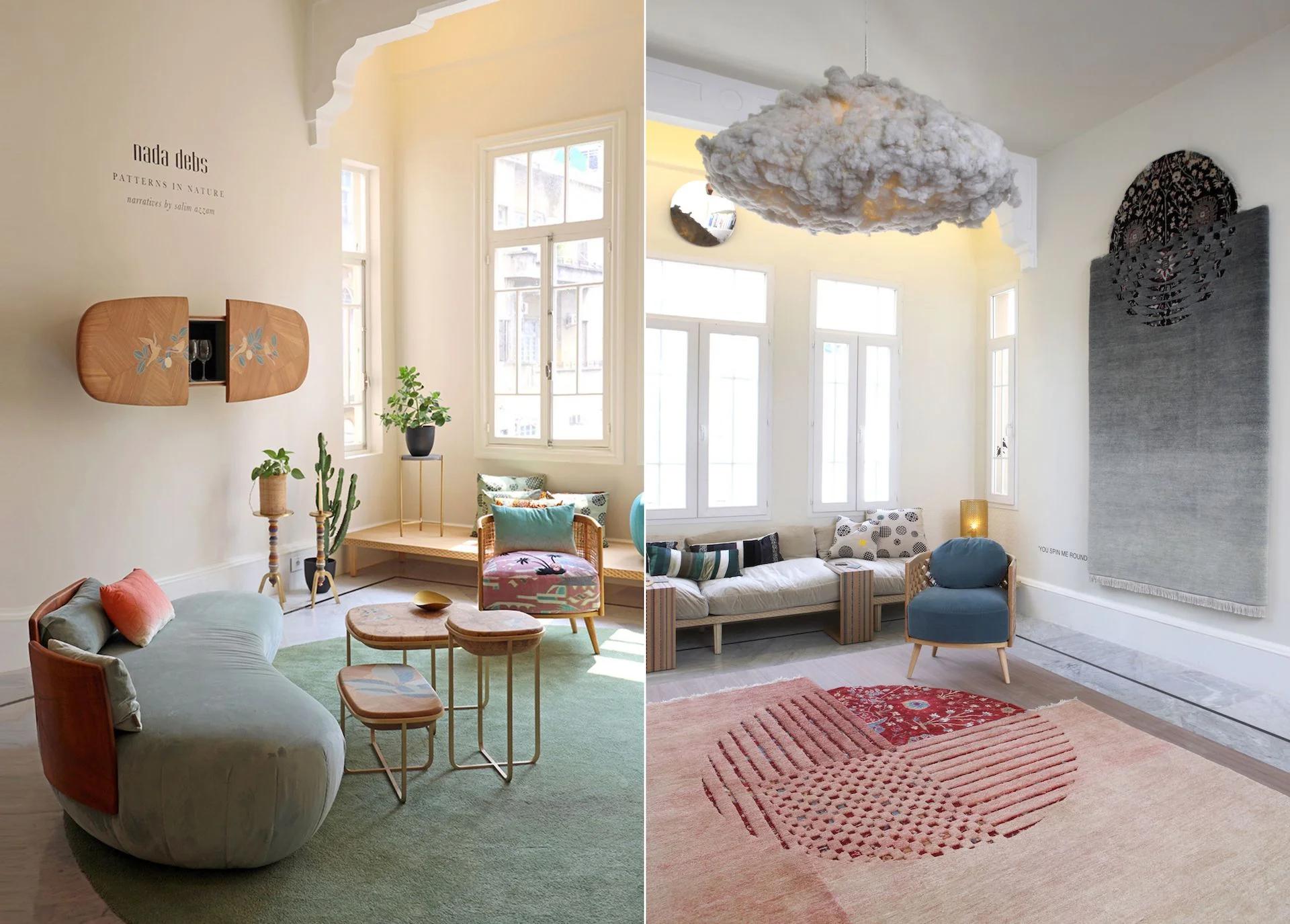
INSIDE NADA DEBS' STUDIO AND SHOWROOM IN BEIRUT
I found America to be a really interesting country, because it’s so new—a bit over 200 years old. It’s so fresh and has so little history. It also has a Puritan mentality, so everything is back-to-basics. When you think of communities who contributed to early American culture, like the Shaker people, they tend to favor simple, functional objects. At the same time, Americans tend to be futuristic in their thinking, and materiality has always been important in building American industries, like glass and steel. America taught me to do things that are functional, practical, and no nonsense; to focus on making things that can be used, not decorative; and to combine different materials to make simple forms.
The UK was a good next step for me, because I was able to launch my career while also engaging with an Arab community for the first time. At the same time, everywhere I went, there were these beautiful antiques stores that celebrated the past. I would go in, and the shopkeepers would talk to me about European craft techniques, like marquetry and hand carving. London inspired me to combine sophisticated craft workmanship with my own contemporary sensibility. I made my first collection there, children’s furniture, featuring marquetry in vibrant colors.
When I moved to Lebanon around 2000, I found it to be a completely new world. The country really is between the East and West, between Europe and the Middle East. It’s the perfect design playground. Prototyping is so easy, because everything you want is nearby, and the craftspeople are very accommodating. I found the Ottoman style of the region’s traditional furniture to be overly decorative, so I began to collaborate with makers on applying their craft, like mother-of-pearl inlay, to much simpler forms. Suddenly people who never liked traditional craft could see it and appreciate it in a new light. This became my signature: utilizing traditional craft in a more pure way so that both the workmanship and the workers who create it are highlighted.

NADA DEBS IN AFGHANISTAN COLLABORATING WITH FATIMA BINT MOHAMED BIN ZAYED (FBMI), A SOCIAL ENTERPRISE SUPPORTING AFGHAN WEAVERS
"The product, when you give it time, radiates positivity and peacefulness."
Nada Debs
WC/“Slow is the new fast” is a phrase you’ve used to describe your approach. How does your practice manifest this philosophy?
ND/Today everyone is looking to get things done quickly. For years, when my clients would tell me, “I need this in a month,” I tried to accommodate. But over and over I found the product didn’t look good when it was done in a rushed way; there would always be problems. I know now that if you want a good product, you have to wait for it. Like that saying, good things come to those who wait. When something is given its proper time, it gets richer and richer—and it’s appreciated more.
It’s ultimately about energy. Think about cooking for someone you love. The food is so good, because you are devoting your full time and attention to it. Translate that to making. When a craftsperson is sitting and doing intricate work—totally devoted to the act of creation, applying details piece by piece—it’s like cooking with love. That energy of attention and devotion is what you actually feel in the end. The product, when you give it time, radiates positivity and peacefulness.
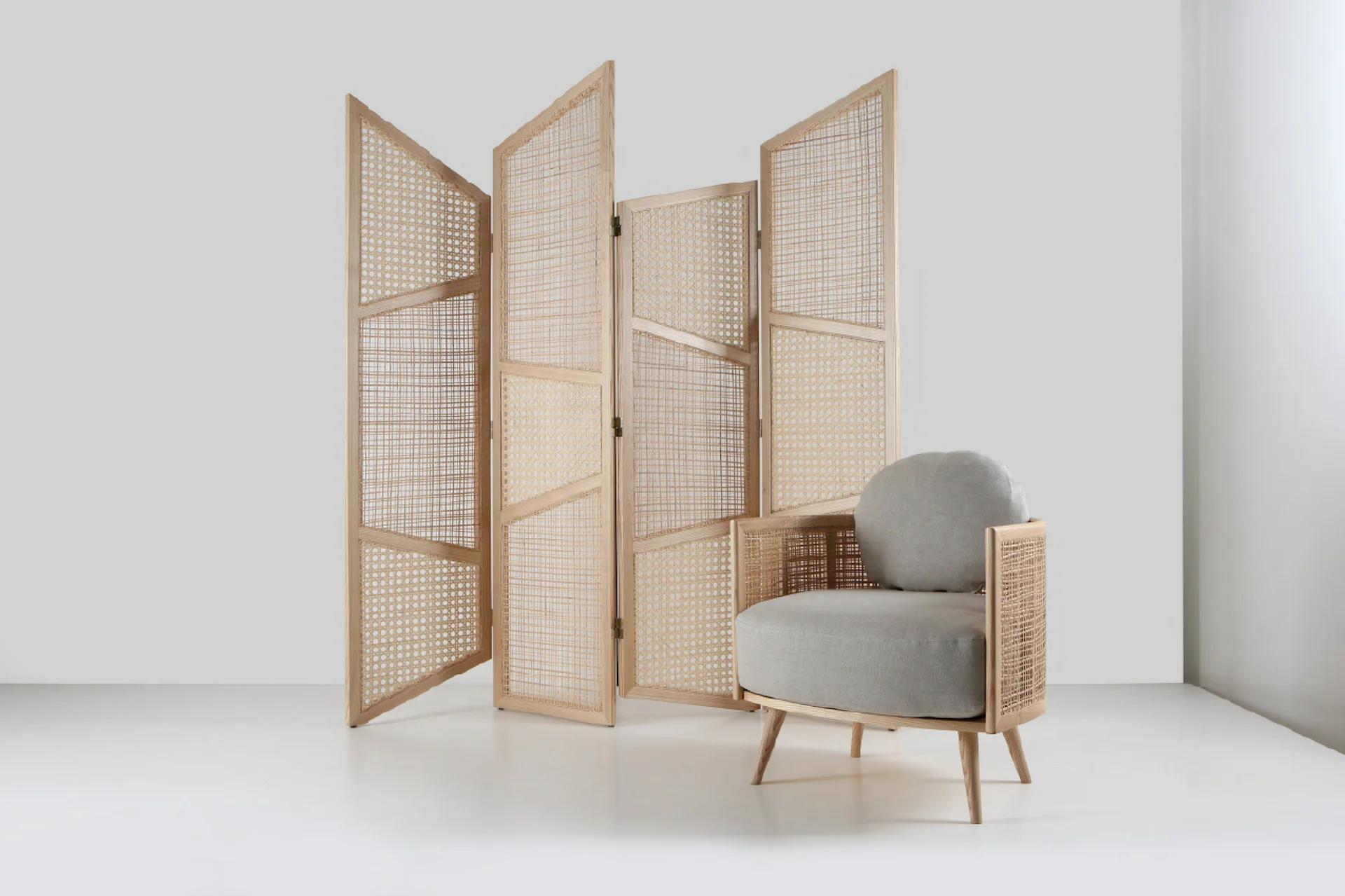
NADA DEBS/ SUMMERLAND COLLECTION
WC/We’ve heard you recently built your dream home in Dubai. What makes a house a home for you? And what aspects of spending time in Dubai do you most enjoy?
ND/Dubai is like America—not much history. For me, though, I can’t live with things being totally new. I appreciate how time reveals itself and creates an energy of nostalgia. In Dubai, vintage means 1970s and 80s. So my dream home in Dubai is from the 1980s. It has a kind of Palm Springs style, one story with a garden all around.
The garden is beautiful—very natural, indigenous, and sustainable. It doesn’t need a lot of water. I love seeing the garden around the home, which is filled with Nada Debs products. I don’t usually use only my own products, but in this particular home I wanted to.
What I like about Dubai is the freshness of everything. It’s a land of opportunity. I am able to come up with new concepts, and people are open. It’s a fast moving community, so I try to make people stop and appreciate craft and history. Yes, the future is important, but so is the past. We need to learn from the past, make it relevant to the present, and apply it to the future. This is what I do with my designs.
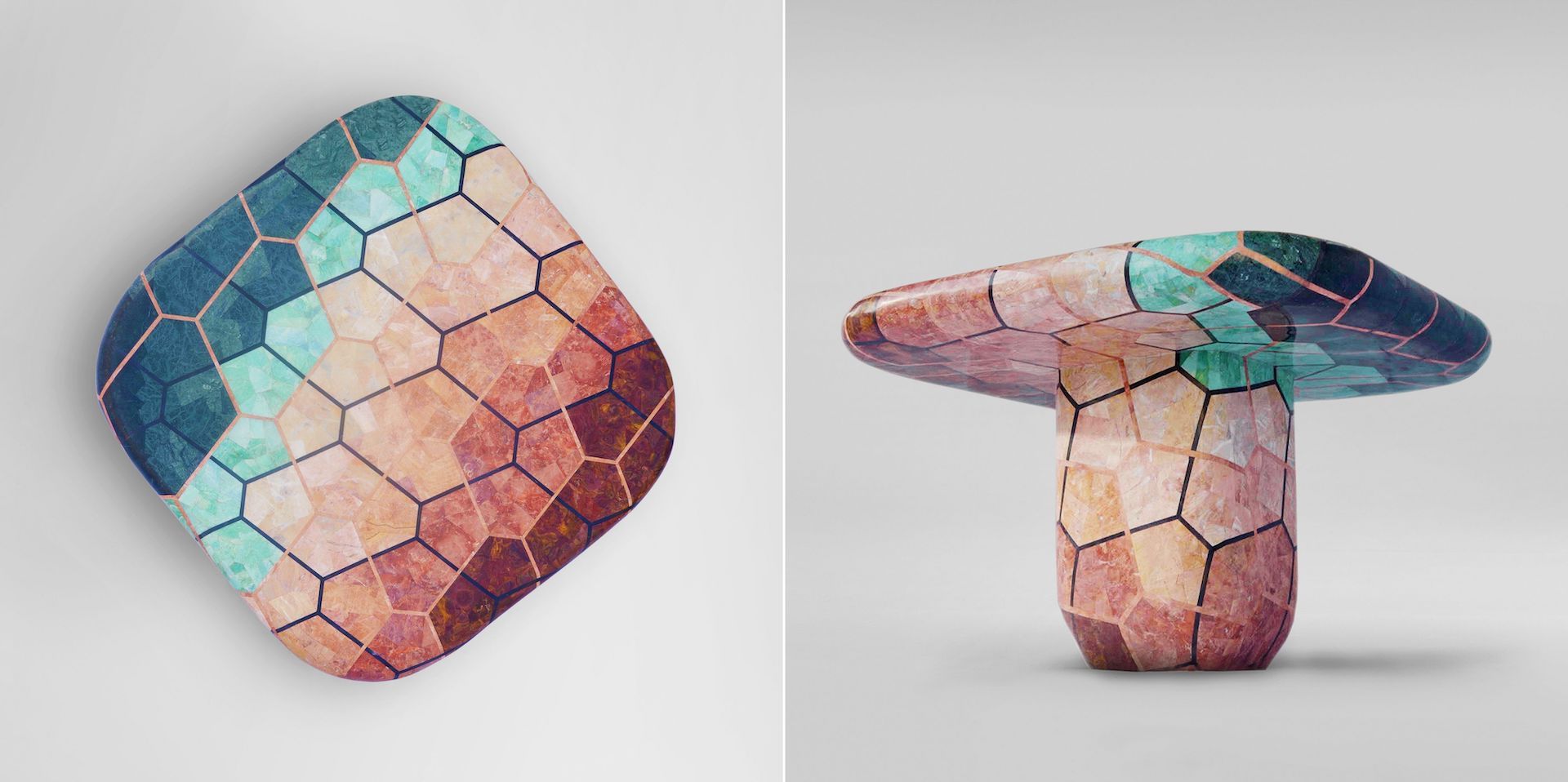
NADA DEBS X STUDIO LÉL/ GANDHARA CARAPACE TABLE FOR GALERIE BSL
WC/ Tell us about your recent project for Galerie BSL, Connections Rebelles?
ND/I appreciate that Béatrice discovered my work and wanted to share it at her Paris gallery in an exhibition called Connections Rebelles. I rebel against tradition while embracing it at the same time.
One of the highlights of the collection presented at Galerie BSL is the Gandhara Carapace Table, created in collaboration with Studio Lél in Pakistan. This mother-daughter duo invited me to experiment with their craft technique—marble inlay—and apply it in a contemporary style. It was a beautiful collaboration. The dining table we created is very luxurious, because it’s made with semi-precious stones. We plan to expand the concept into coffee and side tables as well.
Another highlight is the Coming to Life Collection, a series of tables with mother-of-pearl legs and natural, solid wood tops. I love the contrast between the rustic wood from Costa Rica and the luxurious, iridescent shell material from the Middle East.
Third, I'd like to mention the Stitched Horizons Collection, a series of seats that feature caned backs embroidered by Palestinian refugees in Lebanon. These women usually apply their embroidery skills to clothing and cushions. They answered my challenge to embroider on woven caning so beautifully.

NADA DEBS/ STITCHED HORIZONS PEBBLE CHAIR AND COMING TO LIFE SIDE TABLE 2 FOR GALERIE BSL
WC/ Beirut has produced so many exceptional design talents. How has the Beirut design community responded to the city’s enormous hardships in recent years? And how can people abroad best support the community—and the people of Lebanon more broadly?
ND/Definitely. Part of the reason we have so much talent is because we are so stimulated by the contrasts: rich and poor, peace and war, old and new. There’s so much happening in this one tiny country. It creates a lot of inspiration. It also helps that we’re small, because everything is at most one hour away. Like if I want to produce something new, I can do it in a day. For creating prototypes and experimenting, it’s amazing.
For sure, we have been struggling with the city’s economic and political problems. It has been extremely, extremely challenging. Every time we move forward, we fall backwards. And we barely move forward. What helps is when we export and get a response from the international community. This is how the world knows we have a rich design culture—through press and selling abroad.
We are still struggling, because prices are going up and talent is going down—people are leaving the country. But there are a few who remain insistent, like me. Even if I’m in Dubai, everything is still produced in Lebanon, because we have something to offer. What we have is a unique mix of human warmth and generosity, which is translated in our products.
As long as we are talked about as a nation, as a design community, as long as we are able to export, it helps us. If people could simplify export for us and make shipping less expensive, then we could spread our products more. It's about country relations and the openness of other countries to receive our products.
I think another way to support us is to guide us. We are very good at prototyping but not very good at industrial production. When we want to make 20, 50, or 100 of something, that’s fine. But making 500 or 1000 of something, that’s difficult. It’s not the mindset of the people here, who are very entrepreneurial and don’t like to do the same thing over and over.

INSIDE NADA DEBS' STUDIO AND SHOWROOM IN BEIRUT
WC/ What are you working on next?
ND/I’m working on expanding the cane embroidery project with the refugee women. We are now making cabinets and headboards, applying the craft in different ways using many different colors and patterns. This is the way I work. When I explore a craft technique, I develop an entire line around it.
My studio is also starting to do more interior projects. After years of focusing on product design and production, I’m returning to my origins as an interior architect. So I’m working more with products created by others, mixing them with my own. I incorporate Lebanese designers wherever I can. ◆
—Follow@studionadadebs and @galerie_bsl on Instagram
Photography credits/ top to bottom/ Yasmina Hilal/ Designer Nada Debs in her Beirut studio and showroom/ Studio Nada Debs/ Inside Nada Debs' studio and showroom/ Galerie BSL/ Nada Debs: Connections Rebelles on view at Galerie BSL Studio Nada Debs/ Detail of Land of the Rising Sun Cabinet/ Studio Nada Debs/ Nada Debs (left to right)/ Studio Nada Debs/ Inside Nada Debs' studio and showroom/ Studio Nada Debs/ Nada Debs in Afghanistan with FBMI/ Studio Nada Debs/ Summerland Collection/ Galerie BSL/ Gandhara Carapace Table/ Galerie BSL/ Stitched Horizons Pebble Chair and Coming to Life Side Table 2/ Marco Piranelli/ Inside Nada Debs' studio and showroom/

